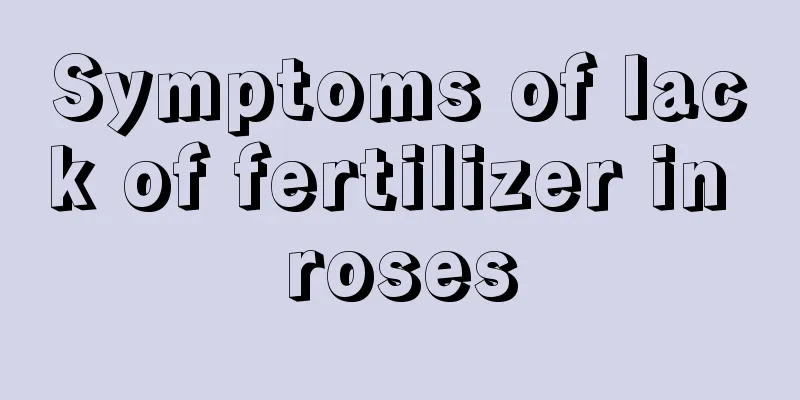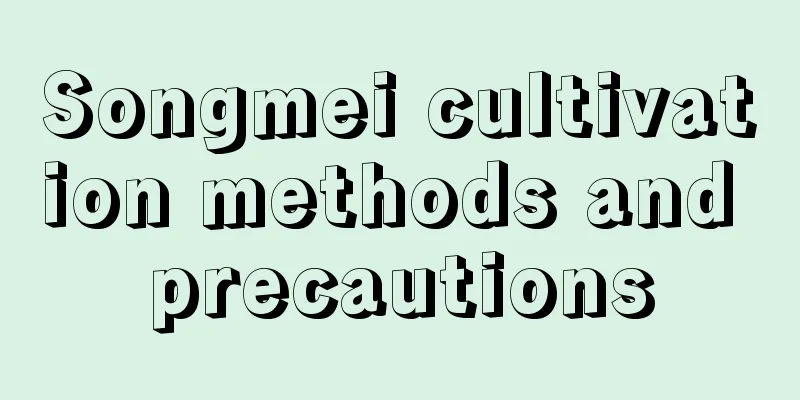Symptoms of lack of fertilizer in roses

The manifestation of missing different elementsDuring the growth process of roses, there will be more or less some problems caused by fertilization. Here the editor will tell you how the rose plants will behave differently when lacking different fertilizers, so that flower lovers can "prescribe the right medicine" to carry out maintenance. Symptoms of plants (including roses) lacking various trace elements:Nitrogen deficiencyThe signs of nitrogen deficiency begin to appear on older leaves. Specifically, there is uniform lack of green, the plants grow abnormally slowly, the leaves turn yellow, and in severe cases the leaves will fall off. Chlorosis symptoms start on older leaves and spread to newer leaves. Phosphorus deficiencyThe symptoms of phosphorus deficiency begin to appear on the older leaves. Specifically, it appears as an abnormal dark green color, sometimes accompanied by gray or purple spots. The color of old leaves turns blue and then slightly purple, the edges of the leaves turn purple-red, and the tips of the leaves will die. Potassium deficiencyThe symptoms of potassium deficiency begin to appear on the older leaves. Specifically, dicotyledonous plants will have mottled green areas, followed by necrotic areas along the leaf edges and tips, which will slowly curl until they become scorched and black. In monocotyledons, the cells at the top and edges of the leaves die first, and then spread to the bottom. Calcium deficiencyThe symptoms of calcium deficiency begin to appear on new leaves. Specifically, the tips and edges of young leaves will die first, followed by the leaf buds, and the root tips will then stop growing and change color, and finally die. The plant grows abnormally short and has dark, wrinkled leaves. Spots appear along the edges of the leaves. Magnesium deficiencyThe symptoms of magnesium deficiency begin to appear on older leaves. Specifically, there is a lack of green between the leaf veins and spots appear. Sometimes it will appear bright colors such as red and orange, and in severe cases there will be small areas of necrosis. Sulfur deficiencyThe symptoms of sulfur deficiency are similar to those of nitrogen deficiency. The leaves will uniformly lack green and turn yellow, and the growth will be abnormally slow. But the symptoms of sulfur deficiency usually begin to appear in seedlings. Iron deficiencyThe signs of iron deficiency begin to appear on young leaves. Specifically, there is an obvious lack of green between the leaf veins, and in severe cases it may appear burnt. Zinc deficiencyThe symptoms of zinc deficiency are abnormally slow growth of internodes and severe deformity of leaves. Striped spots on the leaves and lack of green on old leaves are also common manifestations of zinc deficiency. Boron deficiencyThe symptoms of boron deficiency are thickening of leaves, darkening of leaf color, and eventual death of the meristem at the top of branches and roots. Manganese deficiencyThe symptoms of manganese deficiency are lack of green leaves and small necrotic spots on both young and old leaves. But it should be distinguished from brown spot disease, bacterial spot disease, etc. Copper deficiencySymptoms of copper deficiency begin to appear on young leaves. Specifically, it is necrosis of leaf tips and withering and blackening of leaves. Molybdenum deficiencyThe initial symptoms of molybdenum deficiency are chlorosis and necrosis between the veins of old leaves, and some leaves will slowly die in spots. Chlorine deficiencyThe specific manifestation of chlorine deficiency is that the leaves first wilt, then become chlorotic and necrotic, until they turn bronze. Although the article is long, it is full of scientific knowledge! This time, no matter which element is missing, I believe you will know which fertilizer to use to solve the problem, right? With little by little accumulation, even a "bricklayer" can become an expert! |
<<: Rose cultivation methods and precautions
>>: The difference between Chinese rose and rose
Recommend
How many years does it take for the ugly monster to bear fruit?
Introduction to Planting Ugly Monsters The ugly m...
How many times can white radish be planted in a year? How many days is the growth cycle?
How many seasons of white radish are planted in a...
How to deal with roses after repotting? Can they be exposed to the sun?
1. Spray water frequently Roses that have just be...
Can mangosteen be grown in the north?
Can mangosteen be grown in the north? Mangosteen ...
How much is the yield per mu of Astragalus membranaceus? Planting technology and yield per mu
Yield of Astragalus membranaceus per mu Astragalu...
How to care for hydroponic jasmine
Jasmine hydroponic method When growing jasmine in...
What flowers are suitable for growing in Anyang? What are the city flowers and trees?
1. Climate characteristics of Anyang Anyang has a...
What is the flower language of forget-me-not
1. Flower Language Forget-me-not is known as the ...
Where is the chestnut tree suitable for growing? Growth environment and conditions
Where do chestnut trees grow? Chestnut trees are ...
When to fertilize Kalanchoe? What to do if the leaves turn soft and yellow after fertilization?
1. Fertilization time During the growth period of...
Can Milan flowers be placed indoors?
1. Can be placed It can be placed indoors. Moreov...
What to do if okra does not bear fruit? How to make okra bear fruit
1. Increase lighting Insufficient light is the ma...
If you plant longevity flowers till the end, you are also a master of flower cultivation
Kalanchoe Seeing so many Kalanchoe flowers bloomi...
What to do if the sprouts of the money tree don't grow
1. Watering in time Reason: If there is a lack of...
Best planting time and management methods for autumn cucumbers
Best time to plant autumn cucumbers Autumn cucumb...









